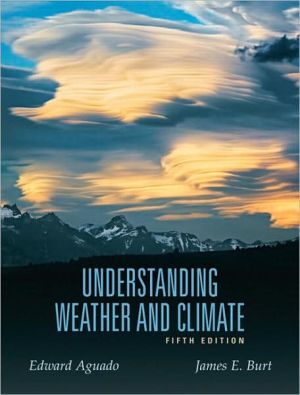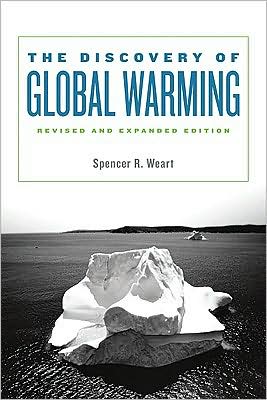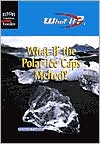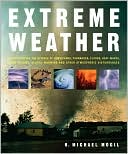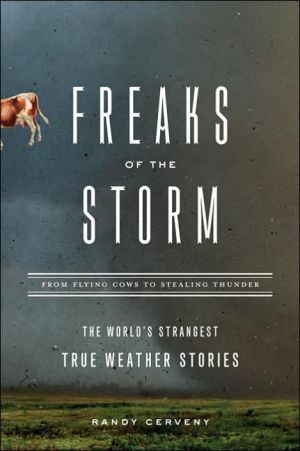Understanding Weather and Climate
Using everyday occurrences to illustrate meteorology and climatology, this first-rate reference works together with inspired technology tutorials to engage readers in learning about atmospheric behavior. Dynamic illustrations from the book come to life in the fully integrated website, where a narrator guides users through animated tutorials, video footage and satellite loops of atmospheric phenomena. Climate change science is updated and folded into atmospheric science coverage throughout the...
Search in google:
The book emphasizes a non-mathematical understanding of physical principles as a vehicle for learning about atmospheric processes. Additionally, difficult-to-visualize topics are reinforced with a series of software tutorials presented on a CD-ROM packaged with the book. Focuses on explanation about, rather than description of, the processes that produce Earth's weather and climate. Software tutorials are keyed to the following topics: Solar Geometry; Global Energy Balance; Atmospheric Moisture; Adiabatic Processes; The Coriolis Force; Atmospheric Forces and Motion; Wind and Pressure Aloft; Cyclones and Anti-Cyclones. Booknews New edition of a meteorology text that bridges the gap between abstract explanatory processes and their expression in everyday events. In the 16 chapters, Aguado (San Diego State U.) and Burt (U. of Wisconsin-Madison) emphasize scientific literacy in a discussion of energy and mass, water in the atmosphere, distribution and movement of air, disturbances, human activities, and current, past, and future climates. Contains color illustrations and maps. The included CD-ROM provides tutorials, three-dimensional diagrams and animations of difficult-to-visualize material, weather images, a media library, and short interactive exercises. Annotation c. Book News, Inc., Portland, OR (booknews.com)
PREFACE: \ Preface\ Meteorology is perhaps the most dynamic of all the earth sciences. In no other sphere do events routinely unfold so quickly, with so great a potential impact on humans. Some of the most striking atmospheric disturbances (such as tornadoes) can take place over time scales on the order of minutes—but nevertheless have permanent consequences. Wind speeds of several hundred kilometers per hour accompany the most violent storms, and large-scale extreme events with attendant widespread destruction are common. Furthermore, even the most mundane of atmospheric phenomena influence our lives on a daily basis (for instance, the beauty of blue skies or red sunsets, rain, the daily cycle of temperature).\ Atmospheric processes, despite their immediacy on a personal level and their importance in human affairs on a larger level, are not readily understood by most people. This is probably not surprising, given that the atmosphere consists primarily of invisible gases along with suspended, frequently microscopic particles, water droplets, and ice crystals. In this book, our overriding goal is to bridge the gap between abstract explanatory processes and the expression of those processes in everyday events. We have written the book so that students with little or no science background will be able to build a nonmathematical understanding of the atmosphere.\ That said, we do not propose to abandon the foundations of physical science. We know from our own teaching experience that physical laws and principles can be mastered by students of widely varying backgrounds. In addition, we believe one of meteorology's great advantages is that reasoningfrom fundamental principles explains so much of the field. Compared to some other disciplines, this is one in which there is an enormous payoff for mastering a relatively small number of basic ideas.\ Finally, our experience is that students are always excited to learn the "why" of things, and to do so gives real meaning to "what" and "where." For us, therefore, the idea of forsaking explanation in favor of a purely descriptive approach has no appeal whatsoever. Rather, we propose merely to replace mathematical proof (corroboration by formal argument) with qualitative reasoning and appeal to everyday occurrences. As the title implies, the goal remains understanding atmospheric behavior.\ Understanding Weather and Climate is a college-level text intended for both science majors and non-majors taking their first course in atmospheric science. We have attempted to write a text that is informative, timely, engaging to students and easily used by professors.\ Distinguishing Features\ Scientific Literacy and Currency. We have emphasized scientific literacy throughout the book. This emphasis gives students an opportunity to build a deeper understanding about the building blocks of atmospheric science and serves as tacit instruction regarding the workings of all the sciences. For instance, in Chapter 2 we cover the molecular changes that occur when radiation is absorbed or emitted, items that are often considered a "given" in introductory texts. In Chapter 3 these basic ideas are used to help build student understanding of why individual gases radiate and absorb particular wavelengths of radiation and illustrate how processes operating at a subatomic level can manifest: themselves at global scales.\ An emphasis on scientific literacy can be effectively implemented only if it is accompanied by careful attention to currency. We believe that two kinds of currency are required in a text: an integration of current events as they relate to the topic at hand, and an integration of current scientific thinking. For instance, the reader will find discussion of both recent hurricane activity and the most recent theories regarding the mechanisms that generate severe storms. Scientific literacy also calls for attention to language—after all, precision of language is an important distinguishing characteristic of science; one that sets it apart from other intellectual activities. With that in mind, we have tried to avoid some common statements of dubious accuracy, such as "warm air is able to hold more water vapor than cold air," or "radiation emitted by the surface is absorbed and reradiated by the atmosphere."\ Media. A fundamental feature of this book is the integration of the classic textbook model with the emerging areas of instructional technology These nontraditional resources are delivered through the CD provided with the book and via the Internet. The software on the accompanying CD consists of several components. Perhaps most fundamental to our approach, the CD features eight computer tutorials covering basic principles of atmospheric science. The software modules have undergone considerable testing and have been used successfully by thousands of students. They rely heavily on three-dimensional diagrams and animations to present material not easily visualized using conventional media. In choosing topics for the modules, we have emphasized material that is both difficult to master and has the potential to benefit from computer technology. We made no attempt to cover every chapter in the modules.\ The software modules follow a tutorial style, with explanations and new vocabulary introduced incrementally, building on what was presented earlier in the modules and what was presented in the text. The tutorials are best used as a supplement to assigned readings. Students and professors will notice that the book and the tutorials are linked. First, the tutorials are described in Media Enrichment sections found at the end of every chapter. In addition, CD icons in the book margins indicate that the topic under discussion is covered in a tutorial as well. A numeric subtitle indicates the section of the tutorial covering that topic. For example, the icon at left indicates tutorial 2, section 2, subsection 1. We advise that you first view a tutorial in its entirety. If additional review is needed, you can use the section number to move directly to the section under discussion. The tutorials are also linked back to the text. The icon shown at left (taken from a tutorial) is used to locate places where the book provides more detailed or background information about the topic at hand.\ In addition to the tutorials, the CD for the second edition of the book has been expanded to include other useful resources. These additions include:\ \ Weather in Motion movies, depicting events and phenomena discussed in the text. Examples include a year-long satellite movie showing clouds and temperature across the globe, three-dimensional simulations of thunderstorm development, and animations depicting variations in Earth's orbit. Like the tutorials, each movie is described in the Media Enrichment section at the end of every chapter.\ Weather Images, providing additional illustration of weather phenomena. These include photographs, satellite images, and computer diagrams complementing the text. Each is described in a Media Enrichment section.\ Media Library resources, consisting of additional images, movies, and animations. These are intended for self-guided browsing by the student, and are there-, fore not explicitly mentioned in the text. A short description of each is found on the CD.\ Interactive Exercises, which are short activities produced by Gregory J. Carbone of the University of South Carolina. These modules cover important topics, such as hurricanes and Earth-Sun relations, and are described in the Media Enrichment sections. Expanded versions of the modules are presented with The Lab Manual for Atmospheric Science by Gregory J. Carbone, which is available at a discount when packaged with this book.\ \ The Internet site ...
I. ENERGY AND MASS.1. Composition and Structure of the Atmosphere.2. Solar Radiation and the Seasons.3. Energy Balance and Temperature.4. Atmospheric Pressure and Wind.II. WATER IN THE ATMOSPHERE.5. Atmospheric Moisture.6. Cloud Development and Forms.7. Precipitation Processes.III. DISTRIBUTION AND MOVEMENT OF AIR.8. Atmospheric Circulation and Pressure Distributions.9. Air Masses and Fronts.IV. DISTURBANCES.10. Mid-Latitude Cyclones.11. Lightning, Thunder, and Tornadoes.12. Tropical Storms and Hurricanes.V. HUMAN ACTIVITIES AND SPECIAL TOPICS.13. Weather Forecasting and Analysis.14. Human Effects: Air Pollution and Heat Islands.VI. CURRENT, PAST AND FUTURE CLIMATES.15. Earth's Climates.16. Climate Changes: Past and Future.VII. SPECIAL TOPICS AND APPENDICES.17. Atmospheric Optics.Appendix A: Unit of Measurement and Conversions.Appendix B: The Standard Atmosphere.Appendix C: Weather Map Symbols.Appendix D: Weather Extremes.Glossary.Index.
\ BooknewsNew edition of a meteorology text that bridges the gap between abstract explanatory processes and their expression in everyday events. In the 16 chapters, Aguado (San Diego State U.) and Burt (U. of Wisconsin-Madison) emphasize scientific literacy in a discussion of energy and mass, water in the atmosphere, distribution and movement of air, disturbances, human activities, and current, past, and future climates. Contains color illustrations and maps. The included CD-ROM provides tutorials, three-dimensional diagrams and animations of difficult-to-visualize material, weather images, a media library, and short interactive exercises. Annotation c. Book News, Inc., Portland, OR (booknews.com)\ \
